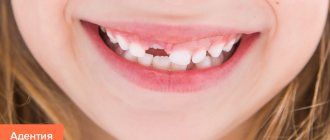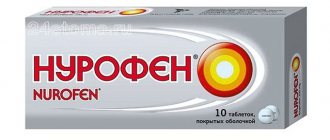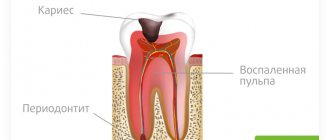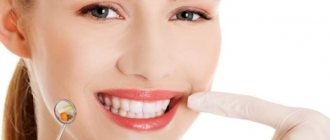Let's talk about headaches, causes and consequences.
Traditionally, headaches are associated with fatigue, a reaction to the weather, or stress. Treatment for headaches is also traditional: we go into the medicine cabinet for headache medications, take pills and wait for the headache to stop hurting.
What if the headache doesn’t stop hurting? We need to look for the cause of the headache, which is sometimes not easy to do. It is no coincidence that doctors called a person who has a headache a “medical orphan.” But, in any case, you cannot put up with a headache; there must be a reason for the pain.
Let's look at several of these reasons.
Migraine symptoms
The first symptom of migraine is the so-called migraine aura. This is not a mandatory symptom, but according to statistics, it occurs in more than 30% of patients. A migraine aura can manifest itself as:
- Visual disturbances - circles, zigzags, blind spots before the eyes;
- Hearing disorders - tinnitus, slight loss of coordination;
- Olfactory disturbances - a sharp increase in the sense of smell, a feeling of an obsessive smell nearby;
- Tactile disturbances - pain or increased sensitivity of the skin, goosebumps, numbness in the face or limbs.
Some patients feel a migraine in advance - they experience weakness, irritability, tearfulness, increased appetite or complete loss of appetite.
Subsequent symptoms of an already occurring migraine:
- Severe, sometimes simply unbearable headache in one side of the head (usually the right). If you concentrate, you will be able to clearly feel the source of pain. It can last from several hours to 3 days.
- Nausea, abdominal discomfort, sometimes vomiting. Complete lack of appetite.
- Photophobia. Even dim light can increase pain or cause discomfort.
- Sound phobia. During a migraine, even a whisper nearby can be painful.
- Weakness. The stronger the pain increases, the stronger the feeling of weakness. During a severe attack, fainting may occur.
Patients with migraine are advised not to wait for an attack to develop, but to stop it in a timely manner. If possible, at the aura stage or the first signals of a developing migraine.
Diagnostic methods
At the Clinical Brain Institute, a complete diagnosis is carried out, which examines all possible causes of pain in the right ear and right side of the head. The initial appointment is carried out by a therapist. Based on anamnesis (medical history), examination and questioning, the patient receives a referral to a specialist. To exclude diseases of the hearing organ or paranasal sinuses, consultation with an otolaryngologist is necessary, or if a neurological picture is present, a neurologist. If you have high blood pressure, it is recommended that you undergo regular scheduled examinations with a physician.
To obtain a complete picture of the disease, an individual diagnostic regimen is prescribed. It may include the following steps:
- general and biochemical blood tests - will show the concentration of leukocytes (an indicator of the inflammatory process), deficiency of important microelements, as well as glucose levels;
- additional tests - studies to determine the gas composition of arterial blood (to detect hypoxia) and hormones;
- MRI and CT are the most accurate and informative ways to assess the condition of the brain; they are prescribed for suspected neoplasms, various defects of nervous tissue, and pathological changes in blood vessels;
- electroencephalography - a method for assessing the bioelectrical activity of brain tissue;
- Ultrasound of the vessels of the neck and head (Dopplerography) - indicates areas of narrowing of the arteries, impaired blood flow and other pathologies;
- examination by an otolaryngologist to identify diseases of the hearing organ.
Based on the diagnostic results, an individual treatment regimen can be prescribed. It is important to go through all the stages and carry out the necessary tests. At the Clinical Brain Institute, examinations are carried out using modern equipment, which allows you to obtain the most accurate results.
Causes of migraine
75% of all patients with migraine reported having migraine in their immediate family. The hereditary factor plays an important role here. The likelihood that a child of one of the parents with migraines will also develop migraines is also 75%.
To date, a connection between migraine and the neuropeptide CGRP, which is involved in the development of a migraine attack, has been discovered. During a migraine, the patient's level of only this protein increases, and after artificial administration of CGRP, the subjects began to experience a headache attack.
The reason why the level of this neuropeptide increases is still unknown.
Unfavorable factors
Various disorders in the body can cause an abnormal condition. Most often this is associated with the functionality of the spine, its diseases (osteochondrosis, hernia, tumors of various types, spondylosis, previous trauma). These disorders lead to compressive pressure on the roots of the nerve canals, which causes severe pain to be transmitted to the central nervous system. Each touching of a nerve, its compression leads to an attack.
There is a high probability of pain paresis with previously diagnosed diseases:
- trigeminal neuritis;
- traumatic brain injury;
- damage to the glossopharyngeal processes;
- aneurysm, hematoma, tumor formations and cysts;
- osteomyelitis of the jaw.
A previous infection can also become an unfavorable factor, since extensive inflammation damages the internal organs of hearing and smell, and affects the intracranial nerve pathways.
What causes migraines?
There are a number of potential triggers that can trigger a migraine:
- Wine, dark chocolate, cheese, honey, coffee;
- Bright or flashing lights are a common migraine trigger;
- The sound is too harsh or loud;
- Menstruation. In women with this type of migraine, attacks occur in the first days of the cycle;
- Too much or too little sleep. For migraine patients, it is important to know your sleep norm and try to stick to it;
- Stress.
But in this matter everything is individual. Migraines can occur suddenly even after waking up and being well rested.
Disables half of the face
There is also a misfortune associated with cold - damage to the facial nerve, the nerve responsible for the work of facial muscles. In this case, severe pain appears in the ear area, the person loses the ability to control facial expressions (most often on the right side.) The face seems distorted.
The list of possible causes and symptoms of headaches does not end here. Just as everyone’s body is different, pain in the head can also manifest itself in different ways.
However, it is important to remember that headaches that appear cannot be left to chance. Self-medicating and taking various medications without knowing the exact reason, without information about the condition of the vessels of the head and neck, blood - is dangerous for your health! Therefore, we recommend undergoing an ultrasound scan of the vessels of the brain and neck.
What to do if you have a migraine?
- Take a drug that stops the attack as soon as possible. NSAIDs may help in the early stages, but triptans are the best treatment today;
- Lie down comfortably in a dark and cool place, provide access to fresh air;
- If necessary, place a towel moistened with cool water on your forehead;
- Avoid exposure to light and sounds;
- Try to sleep;
- If medications and sleep do not help, and the attack becomes more and more painful, you need to call an ambulance.
General description of the condition
The official name of the pathology is “cranialgia”. There is no need for provoking reasons for the appearance of paresis; pain occurs on its own unexpectedly. The anomaly can be characterized by the following features:
- a sudden painful impulse lasting from a few seconds to many hours (sometimes persistent);
- high intensity of pain, further intensifying when moving the eyeballs;
- it is impossible to touch the affected area, analgesics are also powerless;
- The temporal and occipital region suffers most often;
- there is a possibility of fever or vomiting;
- irradiation to the shoulder girdle, neck, shoulder blades;
- twitching sensations in the ears when hearing sounds;
- touching the face, smiling, coughing lead to new lumbago, “bell blows” inside the skull;
- arms and legs become numb, muscles are pulled, gait becomes swaying;
- gradually developing apathy to what is happening around, all thoughts are occupied with pain.
In the chronic course of the pathology, when it manifests itself quite often, intellectual and psychological changes occur, since pain displaces all other sensations and emotions. A person is busy only with himself, constantly expects an attack, becomes irritable, loses interest and the ability to remember basic data (for example, the security code of a plastic card or his telephone number).
Treatment
Conservative therapy
The treatment plan is drawn up taking into account the nature of the disease. The following medications and non-drug methods are used:
- Migraine.
To eliminate paroxysms, non-narcotic analgesics are prescribed. For persistent attacks, blockades are performed. For intense excruciating pain and migraine status, triptans are used in tablets, rectal suppositories, and solutions for parenteral administration. The last two options allow you to solve the problem of taking the drug for persistent vomiting. - Paroxysmal hemicrania.
NSAIDs, glucocorticosteroids, and calcium channel blockers are effective. Depending on the severity of the pathology, medications are taken in short courses or continuously. - Cluster headache.
Painful attacks are eliminated with the help of triptans and applications of local anesthetics to the nasal mucosa. The effectiveness of inhalation of 100% oxygen is noted. Preventive measures in the interictal period are carried out using calcium channel blockers, hormonal, and antiepileptic medications. - Hypnic headache.
The basis of treatment is hypnotics, lithium preparations, and atypical benzodiazepines. Some researchers have reported the effectiveness of steroids and NSAIDs. Before going to bed, patients are advised to take caffeine-containing and melatonin-containing medications. - Vertebrobasilar insufficiency.
Antiplatelet agents, anticoagulants, neuroprotectors, antihypertensive, vascular drugs, exercise therapy, massage, manual therapy, hyperbaric oxygenation, magnetic therapy, laser therapy are recommended. - Tumors.
To reduce the severity of symptoms, non-narcotic and narcotic analgesics, antiemetics, glucocorticoids, and psychotropic drugs are used. Radiation and chemotherapy are carried out as part of palliative therapy or are part of complex treatment in the pre- and postoperative period. - Spinal pathologies.
Pain is eliminated with the help of oral and parenteral forms of NSAIDs, muscle relaxants, and local administration of glucocorticosteroids. They use B vitamins, neurometabolites, phonophoresis, UHF, electrophoresis, and magnetic therapy. - ENT diseases.
Treatment regimens include antibacterial, vasoconstrictor, antihistamines, physiotherapy, paracentesis of the tympanic membrane, and puncture of the paranasal sinuses.
Surgery
Treatment of primary cephalgia is only conservative. For other pathologies, the following may be indicated:
- Vertebrobasilar insufficiency
: reconstructive surgery to restore blood flow. - Brain neoplasia
: removal of cerebral tumors using traditional and minimally invasive surgical techniques. - Spinal diseases
: low-traumatic (endoscopic microdiscectomy, puncture laser vaporization) and traditional (discectomy) interventions for hernias, sometimes in combination with fixation operations. - Pathologies of ENT organs
: sanitizing surgery, mastoidotomy, frontotomy, maxillary sinusotomy, micromaxillary sinusotomy.
Pain in the temple area
Arthritis
17883 October 28
IMPORTANT!
The information in this section cannot be used for self-diagnosis and self-treatment.
In case of pain or other exacerbation of the disease, diagnostic tests should be prescribed only by the attending physician. To make a diagnosis and properly prescribe treatment, you should contact your doctor. Pain in the temple area: causes of occurrence, what diseases it occurs with, diagnosis and treatment methods.
Definition _
Pain in the temple area is one of the most common complaints that brings patients to the doctor.
In the bone structures of the skull and brain tissues, pain sensitivity is insignificant, so the main sources of pain are blood vessels, meninges and cranial nerves.
Types of pain in the temple area
According to the International Classification of Headaches 3 (2013), all headaches are divided into:
- for primary pain not associated with diseases of the brain and other structures of the head and neck;
- secondary pain associated with other diseases;
- painful cranial neuropathies, other facial and headaches.
Possible causes of pain in the temple area
Arterial hypertension
is one of the common causes of headaches in the back of the head and temples. When pressure increases, attacks of headaches occur, which may be accompanied by nausea, vomiting, and “spots” before the eyes.
Tension headache
– one of the common reasons for visiting a neurologist and therapist. Patients characterize it as squeezing, pressing.
Tension headaches interfere with quality of life and performance, despite the fact that they are considered benign and do not carry serious consequences.
Migraine
is the most common form of attack-like headache.
Migraine is characterized by localization of pain in the temporo-frontal-orbital region and a paroxysmal nature of the course.
If the pain is not paroxysmal, then it is not a migraine. Seizures can occur on one side of the head or on both sides, and can also change their location (right-left).
A headache attack can occur at any time of the day, more often during a night's sleep in the morning or after waking up. The pain is pulsating, bursting, with a gradual increase in intensity over several hours. Before the onset of an attack, a so-called aura is possible (harbingers of pain, they vary from person to person, but are often described as disturbances in vision, speech, or dizziness). The pain intensifies in bright light, from loud sounds and other irritants, including changes in head position. The attack can last up to several days.
Harris' periodic migraine neuralgia
- characterized by the sudden onset of pain in the eye area on one side and spreading to the temporal, frontal and zygomatic areas, and sometimes even to the neck.
Unlike migraines, there are no warning signs of pain.
The pain is burning, cutting, bursting, accompanied by redness of the eye and lacrimation on the painful side. Some patients experience a sensation of the eye “bulging out of its socket.” All these attacks are characterized by a certain seasonality or periodicity. The duration of the attack ranges from 6–8 weeks to 3 months.
Pain in the temple area may occur immediately after drinking cold water
or ice cream due to arterial spasm. In this case, the pain is aching, squeezing, sometimes throbbing.
Cold pain occurs in individuals with increased sensitivity to cold stimuli and high reactivity of the body.
“Sausage” headache
(in English-speaking authors -
hot dogs headache
) occurs when eating foods containing food additives such as sodium nitrate. During a chemical reaction in the body, nitrate is converted into nitrite, which has a vasomotor effect (controlling the process of contraction and relaxation of the muscular lining of the walls of blood vessels, and, consequently, the lumen of blood vessels), and sensitive people may feel pain in the frontotemporal region.
A similar effect sometimes occurs when eating Chinese dishes (“Chinese restaurant headache”), where monosodium glutamate is often used.
Giant cell arteritis
is the most common systemic vasculitis in the world, affecting large vessels. The favorite localization of this disease is the temporal artery. Most often, the pain is intense, accompanied by limited function of the corresponding temporomandibular joint, blurred vision with its gradual decrease, and a hardened artery in the temple area is detected.
Without treatment, it can lead to permanent blindness of the eye on the affected side.
With inflammatory diseases of the ear,
pain in the temporal and parotid region is possible, which is accompanied by fever, redness, swelling in the ear area, and purulent discharge from the ear.
Meningitis
develops when an infectious agent enters the membranes of the brain, followed by an inflammatory process.
The headache is sudden, sharp, diffuse, predominant in the frontotemporal areas, sometimes accompanied by vomiting.
Neuralgia of the auriculotemporal nerve
often occurs after an inflammatory process or traumatic lesion of the parotid gland. It is characterized by burning, throbbing pain in the area of the external auditory canal, temple, temporomandibular joint, radiating to the lower jaw. The pain is accompanied by increased salivation and redness of the skin over the affected area. Attacks are triggered by eating and smoking.
Neuralgia of the ear ganglion
manifests itself as attacks of burning pain in the temporal region lasting from several minutes to an hour. May be accompanied by ear congestion and increased salivation.
For altitude sickness
There is a change in arterial tone due to reduced oxygen pressure and changes in barometric pressure. Headache is accompanied by shortness of breath, palpitations, and blurred vision.
The severity of symptoms depends on the speed of ascent to altitude.
The pain is relieved by applying cold to the temples and drinking cool water.
Traumatic lesion of the temporal region
may be the cause of pain. This includes a wide group of pathologies: fracture of the temporal bone, dislocation of the temporomandibular joint, soft tissue contusion.
Subarachnoid hemorrhage
occurs for various reasons, for example, as a result of a rupture of a cerebral aneurysm, a person feels like a strong blow to the head, hot liquid pouring into the head, strong contraction, and then bursting. The pain may initially be localized in the corresponding part of the head - in the temporal region when an aneurysm of the internal carotid artery ruptures.
Damage to the temporomandibular joint
(both inflammatory - arthritis, and non-inflammatory - arthrosis, malocclusion) may be accompanied by pain in the parotid and temporal region. When moving the lower jaw, crunching and clicking may occur in the joint; the pain intensifies when chewing and during conversation.
Which doctors should I contact if I have pain in my temples?
If you experience intense and recurring pain in your temples, you should consult a specialist.
If pain persists after taking painkillers or other symptomatic treatment previously prescribed by your doctor (for example, to lower blood pressure), and there are no signs of injury, you should contact or. Depending on the accompanying symptoms, you may need to consult a neurologist, rheumatologist, otolaryngologist, or ophthalmologist. In case of previous injury, it is necessary to contact a traumatologist or to exclude severe injury.
Diagnostics and examinations for pain in the temples
The list of examinations is prescribed by the doctor depending on the indications. An approximate list of studies that may be prescribed:
- computed tomography of the head;











